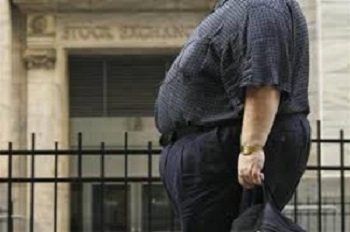It’s been well established that obesity is a contributor to cancer risk, but how it actually causes cancer is still a question that hasn’t been fully explained.
A new study now offers new details showing that a certain protein released from fat in the body can cause a non-cancerous cell to turn into a cancerous one. The research also found that a lower layer of abdominal fat, when compared to fat just under the skin, is the more likely culprit, releasing even more of this protein and encouraging tumor growth according to Science daily.
“While there have been several advances in treating cancer and improving the quality of life of patients, the number of new cases continues to surge,” said Jamie Bernard, lead author and an assistant professor in pharmacology and toxicology.
“It’s important to understand the cause so we can do a better job at reducing the number of cancer cases using dietary modifications or therapeutic interventions.”
Obesity has been linked to several types of cancers including breast, colon, prostate, uterine and kidney, but Bernard indicated that just being overweight isn’t necessarily the best way to determine risk.
“Our study suggests that body mass index, or BMI, may not be the best indicator,” Bernard said. “It’s abdominal obesity, and even more specifically, levels of a protein called fibroblast growth factor-2 that may be a better indicator of the risk of cells becoming cancerous.”
There are two layers of belly fat. The top layer, known as subcutaneous fat, lies right under the skin. The layer under that, called visceral fat, is the one she found to be more harmful.
Bernard and her co-author Debrup Chakraborty, a postdoctoral student in her lab, studied mice that were fed a high-fat diet and discovered that this higher-risk layer of fat produced larger amounts of the fibroblast growth factor-2, or FGF2, protein when compared to the subcutaneous fat. They found that FGF2 stimulated certain cells that were already vulnerable to the protein and caused them to grow into tumors.
She also collected visceral fat tissue from women undergoing hysterectomies and found that when the fat secretions had more of the FGF2 protein, more of the cells formed cancerous tumors when transferred into mice.
“This would indicate that fat from both mice and humans can make a non-tumorigenic cell malignantly transform into a tumorigenic cell,” Bernard said.
She added that there are several other factors released from fat, including the hormone estrogen, that could influence cancer risk, but many of those studies have only been able to show an association and not a direct cause of cancer. She also said genetics plays a role.
“There’s always an element of chance in whether a person will get cancer or not,” Bernard said. “But by making smarter choices when it comes to diet and exercise and avoiding harmful habits like smoking, people can always help skew the odds in their favor.”
Bernard indicated that she is already looking at identifying new anti-cancer compounds in her research that could stop the effects of FGF2.
N.H.Kh

